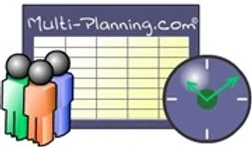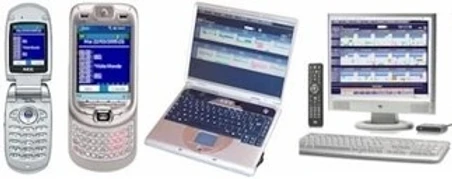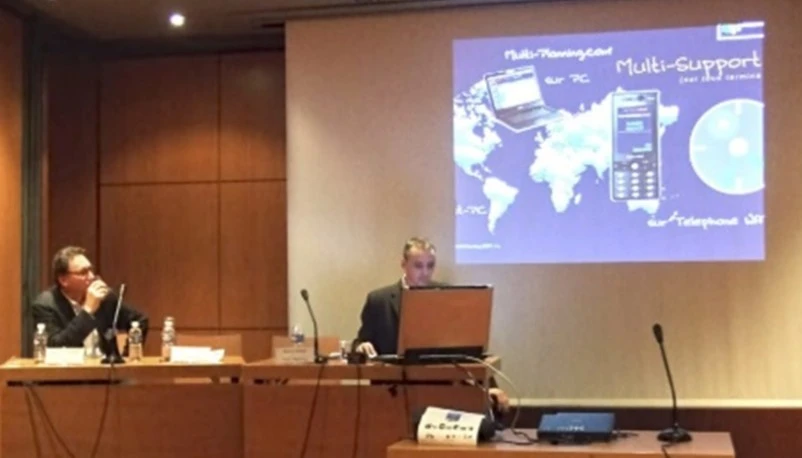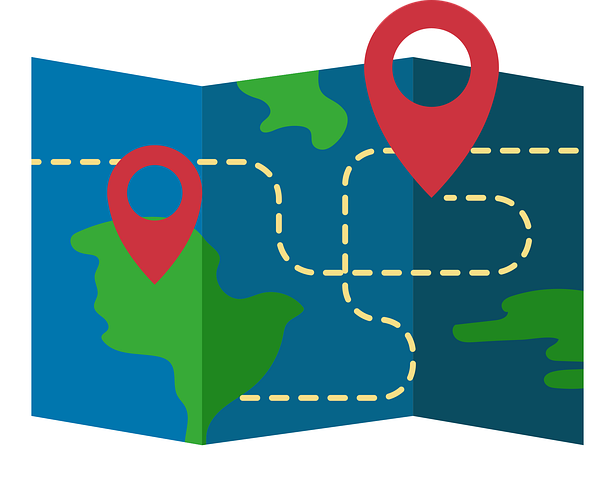It’s now well over 16 years since Multi-planning celebrated its creation. As one of the company’s original co-founders, I was asked “What was it like in the early days?”
Casting my mind back to the beginnings of Multi-Planning.com, it triggered a lot of very fond memories.
Not many people know this, but this small French company was one of the first in Europe to provide cloud services before the cloud was even called the cloud.
With the inventor and technology mastermind Pierre Gobin, on the 18th of January 2005, we spun Multi-Planning off from his main IT services company that he owned and managed, and we launched ourselves into the unknown.

Those were the days of clamshell telephones. The days when a simple 3-page Internet site would cost the equivalent of €5,000 in today’s money. The days when most potential investors thought that when you wanted to spend some of the funds on servers, it was to employ people to serve coffee during meetings. Seriously!
How it all started
The adventure actually began on the 23rd of February 2003. This was my first meeting with Pierre Gobin and his team. As a consultant specialising in business development, I was called in to see how I could help develop their business.
To cut a very long story short, Pierre showed me the first version of his online application that he had designed. Basically, he had designed this product to solve a problem he could find no solution for on the market. This already caught my interest.
His problem was that he had a dozen Technicians covering the whole of the Loire-Atlantic region, whose main job was to help solve IT problems for the 250 Press Correspondents of Presse Ocean, the region’s biggest newspaper.
Thursdays and Fridays would become total chaos, because each Press Correspondent that had an IT issue, needed immediate attention so that their article could get sent to HQ on time. If they missed the deadline, their article would not get published and they would not get paid.
So, during the last few days of the week, each Technician needed to call the office after each meeting to find out what the next customer visit was as his original agenda had inevitably been changed due to new priorities.
Pierre, therefore, designed a multi-user online planning application that would allow each Technician to consult his phone after each meeting to see where the next meeting was. The address and phone numbers were included in case the meeting had changed or that the customer needed contacting because the Technician was lost or late. Each planning was permanently up to date in real-time.
This might sound very simple and familiar today, but in 2003, “only” 18 years ago, this was simply revolutionary. It also shows that the adage, necessity is the mother of invention, holds true.

A new vision
When I saw the way that the multi-user planning worked and tried it for myself, I was convinced that technology would be game changer for the future.
Having been a salesman and sales manager for decades myself, I knew that this product would also work for most travelling salespeople around the world. Indeed, anybody that was mobile.
During our early brainstorming meetings, we saw the fact that the software didn’t need to be physically installed and regularly updated as another major advantage. Softwares could only be installed and updated by an official IT person. Each software had to be manually updated on each terminal, one at a time. And there were many updates and crashes in those days.
Many months were spent further developing Pierre’s initial concept into a sellable product. As the first MVP became available, the need for paying customers and investors became urgent.
All the development work and market analysis had been going on in parallel to the everyday business so as to keep the money coming in and help finance the development.
Hunting for customers
I can only agree with Albert Einstein when he said, “Genius is 1% inspiration and 99% perspiration”.
In 2004, Google Calendar didn’t exist.
The only possibility to get emails and/or your agenda on the move was to use Microsoft Outlook Exchange, which was quite a costly solution for SMEs. One of the first phones with a useable screenOne of the first phones with a useable screen When I did the first live demo in front of dozens of people at the Chamber of Commerce in Nantes, it was quite simple. I had 2 clam-shells phones, one in each hand. I picked the most curious yet friendly-looking face in front of me and asked him, “What time would you like us to meet tomorrow?”. “Why?” he answered a little surprised. “It is just for a quick demo…” I answered. “OK, my name is Julien, and we can meet at 10 am tomorrow”. Within a few seconds I had typed in the information into my planning on one phone (actually not that easy with the old phone keyboards) and pushed “send”. The phone in my other hand beeped, and I showed Julien that our meeting had just come up on the screen of the other phone. In a matter of seconds. He was genuinely amazed. He turned around to the others around him and said: “Did you see that? It’s like magic!”
Having repeated the demo a few times for different people, what the audience initially thought was a “trick,” they soon realised that it was for real and it wasn’t just an SMS being sent from one phone to other. Having captured their interest, I then showed them how Multi-Planning.com could be used to plan the route to get to their office by linking up to a map app. As I mentioned earlier, Google Maps did not exist in those days. We used a French service called Mappy.com. By clicking on the address of a contact, Multi-Planning would automatically search for the address on Mappy.com and, depending on the size and quality of the phone’s screen, could indicate directions and an ETA.
For its day, that was simply astounding!
People just did not believe that a small French company could compete technology-wise with the was-then Microsoft ogre.
In those days, brands like Nokia, Ericson, Blackberry, Alcatel, LG, Samsung, and others were furiously competing to become leaders in the portable phone market with phones, Palms and PDAs getting more and more sophisticated more or less every month. Nokia was the market leader, and Blackberry was popular with businesses due to its increased security and a full keyboard.
First commercial success
Early in 2005, we found our first paying customer: Bently-Nevada. Part of what is now the GE Energy group. I asked the boss in Nantes, Serge Mousset, why such a large company like GE, who had access to any software on the market, would want to buy our cloud-based planning and CRM services?
He spent 10 minutes explaining to us what he saw as being the main advantages for him and his team. Some of his ideas, we hadn’t even thought of ourselves. His answer actually became our future sales pitch.
I then asked him how much he would be willing to pay for these services. His answer was 3 times the price that we had initially imagined. The contract that we had prepared stayed in Pierre’s briefcase and we sent Serge a new contract with the new price the next day.
It was a monthly subscription per user, which could be cancelled at any time. No risk for the user. That was also very new as many people loathed the phone Internet and TV subscriptions which were usually on an annual basis, and very difficult to get out of.

Customisation
Our next key customer was a regional initiative in the Nantes area called HAD (Hôpital A Domicile). The idea was to reduce the number of patients in hospitals by hiring over 100 “mobile” nurses that treated patients at their own homes, thus liberating beds in hospitals.
We solved their problem of having to send hundreds of individual Excel planning sheets by fax (heard of it?) every day to the nurses, at their homes.
Having created the first multi-user online planning, including one of the first-ever online CRMs, with clickable links that opened a map for directions, we were already helping HAD to optimise the efficiency of the nurses.
By logging onto their Multi-Planning account every morning, they could see in real-time what their agenda for the day was. They could plan their routes to the patients and contact them if necessary.
The search for investors
Searching for investors was even more difficult than looking for customers. The Dot-com bubble had exploded and anything to do IT, software and, in particular, Internet was kept at arm’s length. When we were finally in front of potential investors, mainly in their 60s or more, they simply could not grasp the concept of Multi-Planning. How it worked. How it was deployed. Most potential investors had made their fortunes manufacturing soap, food products, real estate, and so we had questions like: “Where is your factory?” “Where will you stock your products?” “People can really pay with credit cards online?” “No invoices being sent out by post every month?” “My contacts on my PC are accessible on my phone?” “I can store a file on my PC at work at retrieve it in my hotel room in the evening on my phone?”
No factory, no products to stock in a warehouse with use-by dates, no shipping costs, no customs duties when working abroad, no financial risks due to bad payers … it was simply too good to be true. There had to be a snag!


The search for investors
Searching for investors was even more difficult than looking for customers. The Dot-com bubble had exploded and anything to do IT, software and, in particular, Internet was kept at arm’s length. When we were finally in front of potential investors, mainly in their 60s or more, they simply could not grasp the concept of Multi-Planning. How it worked. How it was deployed. Most potential investors had made their fortunes manufacturing soap, food products, real estate, and so we had questions like: “Where is your factory?” “Where will you stock your products?” “People can really pay with credit cards online?” “No invoices being sent out by post every month?” “My contacts on my PC are accessible on my phone?” “I can store a file on my PC at work at retrieve it in my hotel room in the evening on my phone?”
No factory, no products to stock in a warehouse with use-by dates, no shipping costs, no customs duties when working abroad, no financial risks due to bad payers … it was simply too good to be true. There had to be a snag!
So Pierre and his team created an online reservations system that was applicable to any type of reservation, from tee-off times, tennis courts, dentist appointments, car-sharing, meeting rooms, etc. Divorced couples to manage the agendas of their childrenDivorced couples to manage the agendas of their children An early Multi-Planning screen Multi-Planning.com was even used by divorced couples to manage the agendas of their children. Planning in real-time when which child would be with which parent, who would pick them up from school or sport, who would look after them during school holidays. This all seems so normal today, but those days, it was a revolution.
I then negotiated partnership contracts with Orange (then known as France Telecom), SFR and Bouygues Telecom, where we adapted the business model further to bundle a complete package for the customer: Multi-Planning service + a smartphone + a data subscription. The iPhone 3G revolutionised this market when it was launched in the summer of 2008, and with it, the capabilities of online applications. Unfortunately, our lack of funding didn’t allow us to pursue other interesting ideas, like developing further the online CRM module. SalesForce.com today epitomises many of the ideas that we had around 2007 but did not have the resources to develop. At the same time, we also wanted to develop an online accounting module, as for a small company, accounting, especially French accounting, was a time-consuming administrative disaster with papers, documents, receipts, and accountants travelling to and from the account every month, sapping valuable time. If only we could fill in the documents online, and scan the relevant document, and have the accountants validate everything from their office. Difficult to believe, but in 2007, no-one had heard of such an idea!
Conclusions
The success of the Multi-Planning venture was based on a brilliant initial idea, out of the box thinking, amazing multi-disciplinary teamwork, courage, drive, determination, and the will to take risks and make sacrifices.
What a privilege it has been to be able to take part in and shape such an adventure.
Building a new vision for a product or service, even an entire industry where no rules, examples or benchmarks exist, is probably one of the most exciting (business) challenges of all.
“If I had asked people what they wanted, they would have said faster horses”.“If I had asked people what they wanted, they would have said faster horses”.
As Henry Ford allegedly said, “If I had asked people what they wanted, they would have said faster horses”.
With Multi-Planning we were in a similar situation, where listening to customers is, of course, essential, but sometimes you have to add lateral thinking, think out of the box, and be capable of imagining a new vision of the future.
Start-ups, then as much as now, need not just funding, and innovative technology, but also good sales, marketing, communication, and management capabilities to help take a great, potentially ground-breaking, idea through the steps to creating a sellable and profitable product or service.
But start-ups also need early adopters and people who will take a risk in buying or investing in a new technology.
Thank you to all involved, with a special mention for Serge, wherever you are today, for believing in us, and in our innovative business model. And the development of Cloud based businesses will continue for years to come with the advent of multicloud strategies, pervasive (ubiquitous) computing, IOT, AI, etc. There are still so many opportunities to harness!

